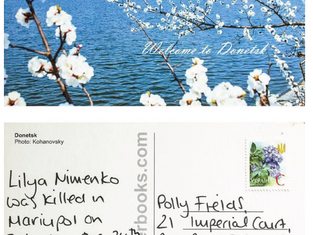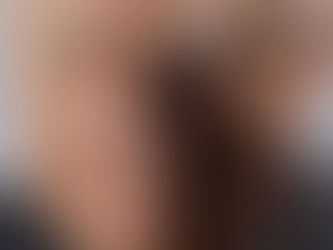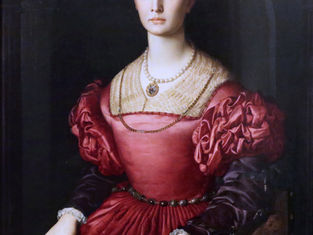top of page
Articles


Interdisciplinarity as a Way of Life: In Conversation with Anthony Julius
Anthony Julius is a solicitor advocate who has represented Princess Diana and Deborah Lipstadt. He is Deputy Chairman of Mishcon de Reya,...

Elizabeth Huang
10 min read


Revitalising the Royal Academy: In Conversation with Sir Christopher Le Brun
Born in Portsmouth in 1951, Sir Christopher Le Brun is a painter, printmaker, and sculptor. As President of the Royal Academy 2011-19, he...

Alexander (Sami) Kardos-Nyheim
7 min read


Something to Write Home about: Postcards of Donbas, Postcards as Donbas
Postcards have long been linked to memory formation, sold primarily as ‘souvenirs’, a term itself deriving from the French verb souvenir...

Alice Mee
10 min read


‘Alterers’ Filtering out Artists: Using the ‘Public’ Perspective to Preserve Moral Rights over Digital Art
In the digital age, the sharing of images is prevalent across a variety of online platforms. Instagram, one of the largest of these, can provide an up-and-coming artist with an audience of over one billion users. Some already predict the platform’s decline. Kenny Schachter recently commented that, given Instagram’s ever-changing format, ‘it is only a matter of time before the powers that be get too greedy and the ease and accessibility of the app decline’.[1] Yet platforms li

Thomas Hood
9 min read
![Modern Claims against Auction Houses: Sotheby’s v Mark Weiss Ltd and Ors [2020] EWCA Civ 1570, Noted and Analysed](https://static.wixstatic.com/media/b589e0_4cc02720977145ada035daebc31f358e~mv2.jpg/v1/fill/w_334,h_250,fp_0.50_0.50,q_30,blur_30,enc_avif,quality_auto/b589e0_4cc02720977145ada035daebc31f358e~mv2.webp)
![Modern Claims against Auction Houses: Sotheby’s v Mark Weiss Ltd and Ors [2020] EWCA Civ 1570, Noted and Analysed](https://static.wixstatic.com/media/b589e0_4cc02720977145ada035daebc31f358e~mv2.jpg/v1/fill/w_314,h_235,fp_0.50_0.50,q_90,enc_avif,quality_auto/b589e0_4cc02720977145ada035daebc31f358e~mv2.webp)
Modern Claims against Auction Houses: Sotheby’s v Mark Weiss Ltd and Ors [2020] EWCA Civ 1570, Noted and Analysed
Introduction Frans Hals was a mildly successful seventeenth-century Dutch old master who specialised in portraits. Few of his works have persisted in popular cultural consciousness in the intervening 400 years. One exception is the Laughing Cavalier, painted in 1624, which remains on display in the Wallace Collection in London. The Laughing Cavalier was once described by the Harvard art historian Seymour Slive as ‘one of the most brilliant of all Baroque portraits’.[1]

Edward Mordaunt
17 min read


Who Am I?
One of the problems of having lived a long life is that it brings home to one the many different identities one has occupied in the...

Edward Lucie-Smith
4 min read


The Politics of NHS Spending
The UK’s National Health Service (NHS) was set up in 1948 following the 1942 Beveridge report, a cross-party report which established its...

Fatima Osman
6 min read


Making BBC Four’s African Renaissance: In Conversation with Russell Barnes and Clare Burns
Russell Barnes is a Director and Producer for the documentary production company ClearStory. Clare Burns has worked in television...

Helen Grant
10 min read


In the Wake of Colston: Wake Work after Woke Work
What does it mean to defend the dead? To tend to the Black dead and dying: to tend to the Black person, to Black people, always living in the push toward our death? It means work. It is work: hard emotional, physical, and intellectual work that demands vigilant attendance to the needs of the dying, to ease their way, and also to the needs of the living. —Christina Sharpe[1] A world divided into compartments, a motionless, Manicheistic world, a world of statues: the statue o

Jacob Badcock and Jovan Owusu-Nepaul
19 min read


Traversing the Art Legal System in Early Modern Venice: The Case of Antonio Floriano’s Mappamondo
The application of print privilege (pre-copyright) legislation to Venetian cartography came about by chance.[1] While the Venetian Republic was not the first state in Europe to construct a system of printing privileges, it was the earliest to grant limited monopolies for cartography and artwork. Intended originally for bestowing printed book privileges, the wording of the sixteenth century legislation and printing culture of Early Modern Venice enabled the expansion of the pr

Sarah Alexis Rabinowe
26 min read


Art and Arbitration: In Conversation with Camilla Perera-de Wit and Bert Demarsin
Camilla Perera-de Wit is the Secretary-General and Director-General of the Netherlands Arbitration Institute (NAI). Her previous experience in dispute resolution includes her work at the Permanent Court of Arbitration (PCA) and at P.R.I.M.E. Finance. She is a board member of the Court for Arbitration of Art (CAfA) in Rotterdam. Bert Demarsin is a law professor at KU Leuven, who has conducted extensive work on art disputes. His work particularly focuses on provenance and aut

Elliot Wright
8 min read


Justice Must Be Seen to Be Done
A central image in the consideration of law is the totemic figure of justice—Justitia—the blindfolded Roman goddess of justice. Often appearing in statue form in many courthouses and carrying a sword and scales, she heralds the idea of law as impartial and unseeing, of law as a system that, theoretically at least, is open to all—democracy as a form of blindness. The irony of this sightlessness will not be lost on artists, who tend (with good reason) to think of law as oafishl

Carey Young
6 min read


Cultural Appropriation: A Gap in the Law?
The Jamaican Jerk seasoning. Halloween. Kendall Jenner’s new Tequila brand. The mascot of the Washington Redskins. Rugby. Victoria’s...

Mirjam Dietrich
14 min read


Americanitis: Architecture, Mass Media, White Supremacy
The origins and definition of the word ‘Americanitis’ are opaque at best. It is generally believed to have appeared in medical journals of the late nineteenth century, describing a particular nervous ailment found in the inhabitants of the United States of America. Thought to cause disease, heart attack, nervous exhaustion, and even insanity, Americanitis was seen as a serious threat to the American public. In fact, in 1925, Time Magazine reported that Americanitis was respo

Nicolas Canal Tinius
15 min read


Bronzino’s Panciatichi and the Petrarchan Ideal
Fig 1. Portrait of Lucrezia Panciatichi (Bronzino 1545, oil on panel, 102 x 85cm). Uffizi, Florence. Wikimedia Commons....

Ruairi Smith
4 min read


Mad Genius: Art, Illness, and Recovery
Art historians and psychologists alike have long been fascinated by the tentative relationship between art and mental illness. A number...

Amelia Bateman and Lucy De-Rhune
11 min read


The Space Race and Its Discontents: Hannah Arendt on Space, 1951-63
Introduction Arendt’s account of modernity and The Human Condition (1958)[1] Opening the final section of The Human Condition...

Clare Francis
20 min read


Copyright Law between Art and the Internet: In Conversation with Professor Andreas Rahmatian
Professor Andreas Rahmatian is Professor of Commercial Law at the University of Glasgow School of Law. Originally from Vienna, he obtained his first degree in law and a PhD in Private Law from the University of Vienna, and completed another degree in musicology and history there. He holds an LLM from the University of London. He worked as an associate attorney-at-law in Vienna and qualified as a solicitor with a City firm in London before he became a full-time academic. He ha

Thomas Hood
22 min read
bottom of page

